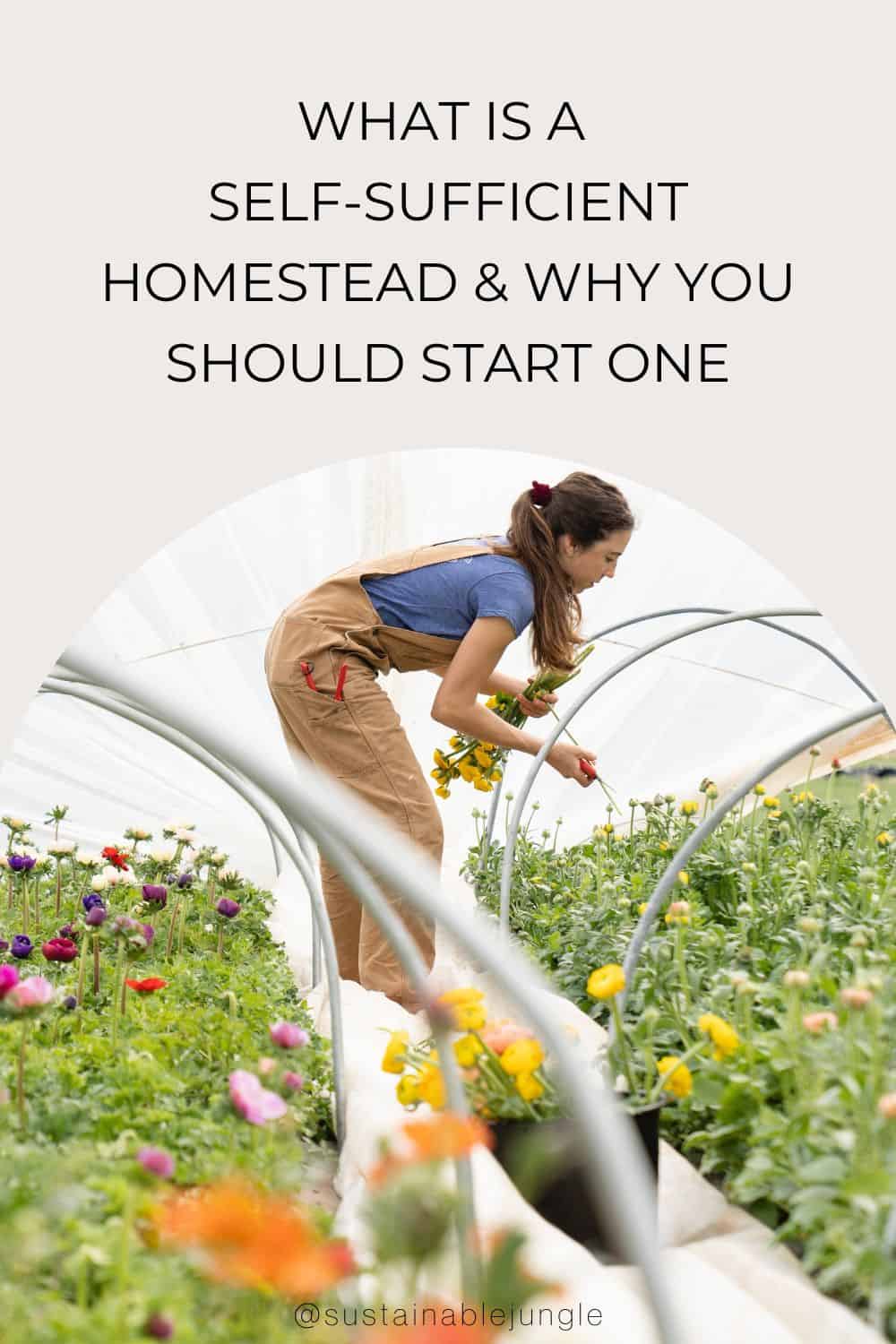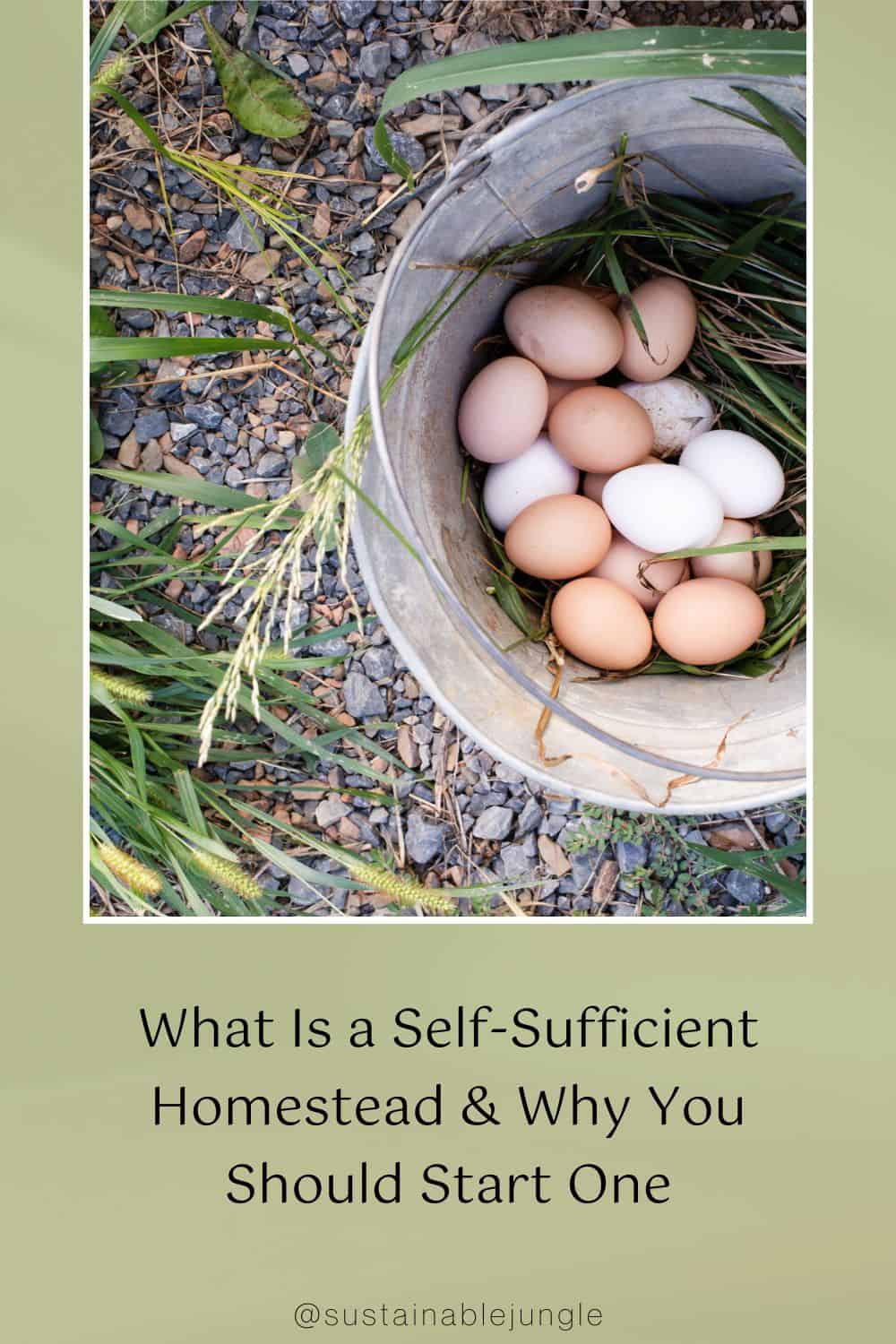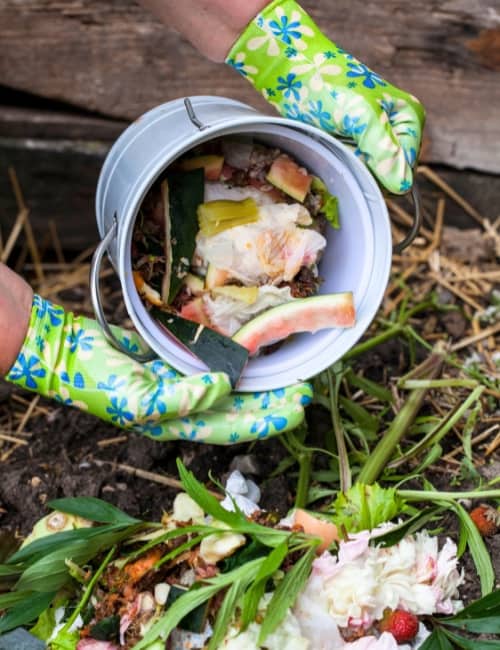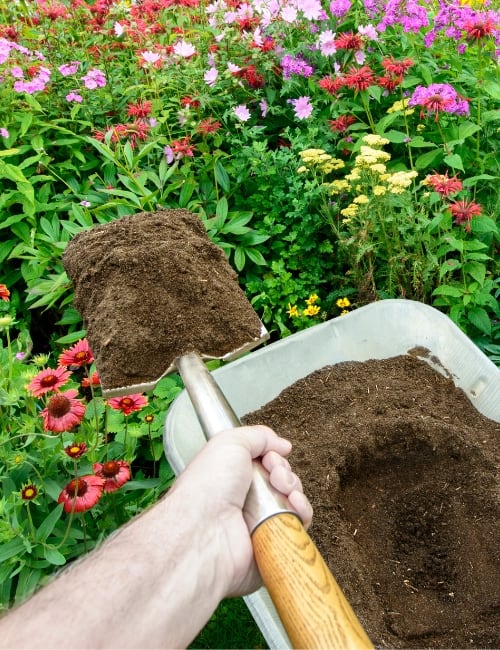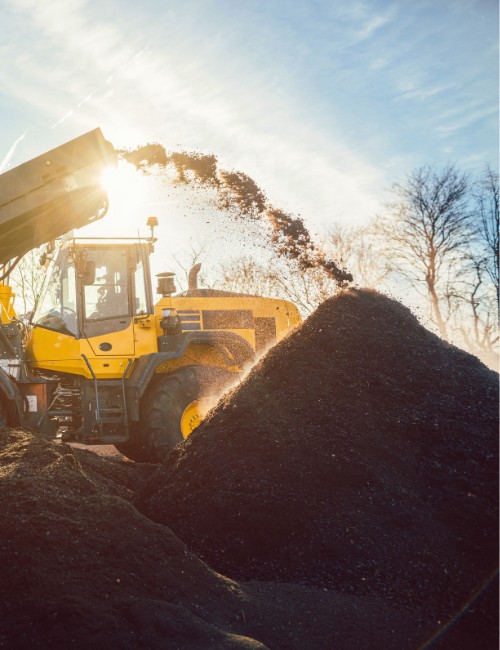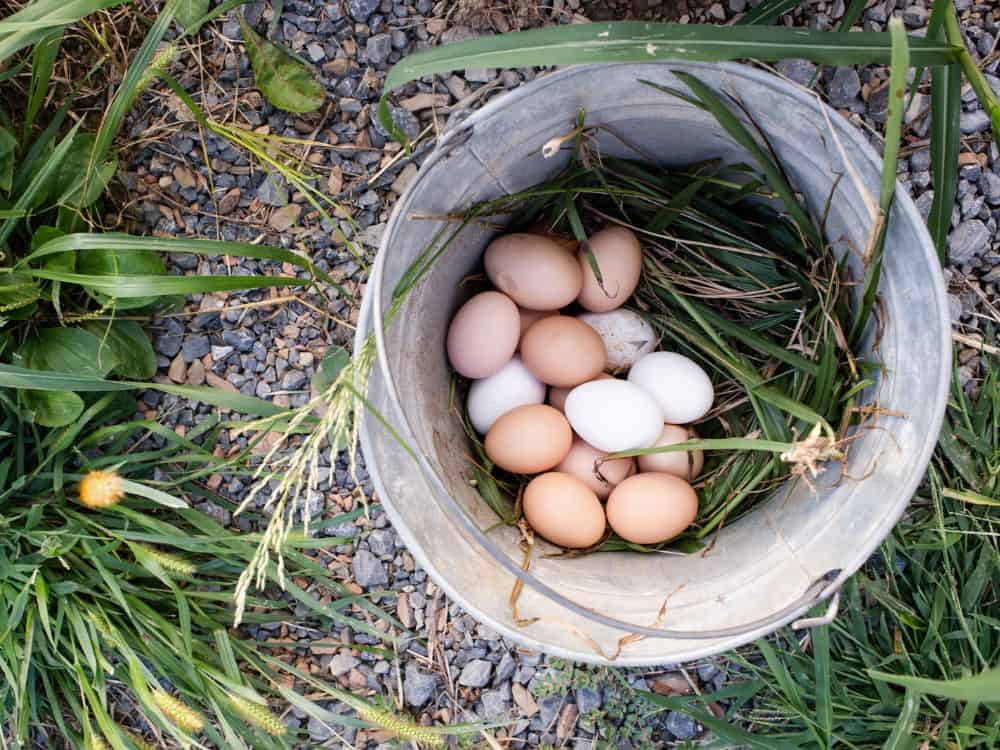
What Is a Self-Sufficient Homestead & Why You Should Start One
In search of a guaranteed, self-sufficient supply chain, many are flocking to the idea of the self-sufficient homestead, turning their one-acre homestead plots and backyards into a biodiverse, food-producing paradise.
Self-sufficiency movements deliver a spike in off-grid property purchases with plans for gardens, livestock, solar energy, and the return to a more natural way of life.
A dramatic decline in industrial agriculture due to soil degradation, climate change, and cyclical weather patterns pushes those with wavering faith in corporate food production to pursue more guaranteed food sources in their own backyards.
With farm blogs, off-grid tips, and gardening tutorials, anyone can get their hands dirty and build their own self-sustaining backyard farm.
The Full List Of Self-Sufficient Modern Homestead Tips
- What is a self-sustaining farm or homestead?
- The benefits of a self-sufficient modern homestead
- How to make a self-sufficient homestead
- Things to consider in your self-sufficient farming plan
- Raising self-sustaining farm animals
- More self-sufficiency skills to think outside the (garden) box
1. What Is A Self-Sustaining Farm Or Homestead?
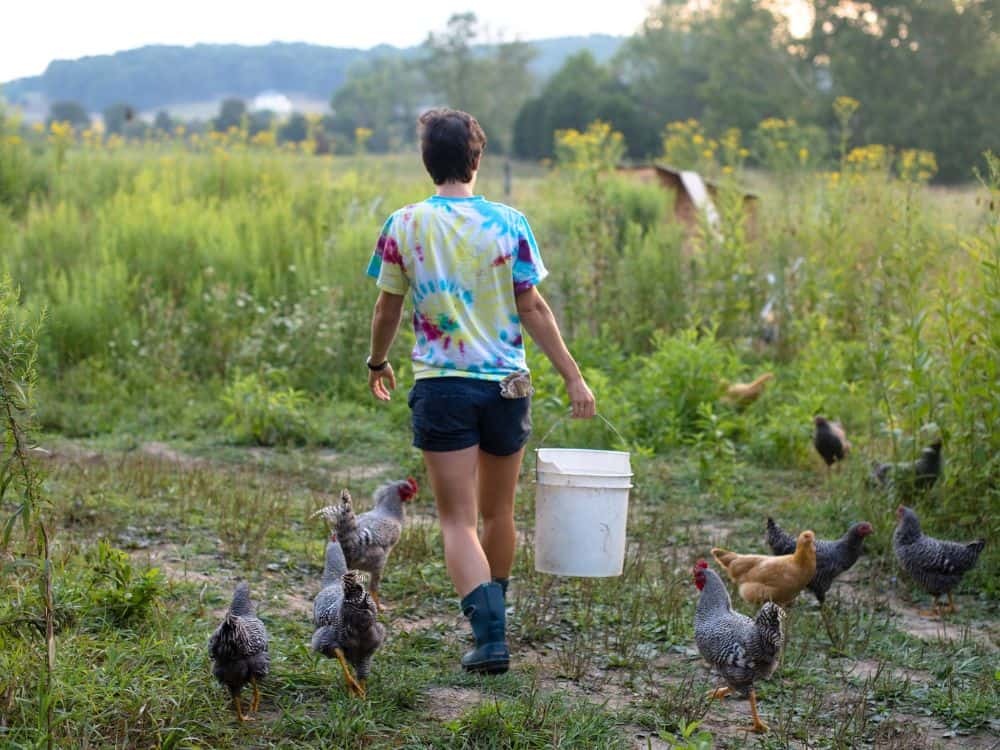
It’s difficult to define ‘self-sufficient homestead’, because self-sustainable living looks different for everyone.
At its most extreme and ideal end, it’s producing all food, clothing, cleaning supplies, medicines, everything without purchasing anything outside the homestead.
Go-it-alone homesteaders rely very little on others’ input, and could live comfortably on their own land for several years with the proper planning and preparation.
However, you don’t need to know how to be 100% self-sufficient to significantly reduce your reliance on the largely unsustainable industries and systems of the modern world.
More achievable for the typical self-sustaining small farm is choosing specific sustainability goals for a time and reaching them before starting the next. This could look like supplying a freezer full of meat for the upcoming months, preserving all garden produce for the year, or purchasing only local goods.
Even without producing their own, many choose to be more conscious of their purchases by limiting extra spending on mass-produced goods.
Self-sufficient, by definition, is satisfying one’s own needs without input from others, but finding a like-minded community of locals to share knowledge, goods, and ideas still falls under the sustainability umbrella.
In fact, relying on others could build your own sustainable homestead faster by using tried-and-true methods of growing, harvesting, or raising livestock.
So, what is a self-sufficient homestead to you?
To determine what is needed for your self-sufficient homestead, you need to figure out what your particular goals are.
To avoid overwhelm, planning what will suit your farm and family best is setting your self-sufficient farm (however big or small it may be) up for success. Sticking to set buildable goals creates a stable, self-sufficient system that doesn’t overlook essential steps.
Self-sufficient living, for most, is ultimately an ongoing journey, not a final destination—just like sustainable living in general.
How many acres do you need for a self-sufficient homestead?
Is it possible to have a self-sustaining farm on just 1 acre? Or a 5 acre self-sufficient homestead?
Without deeds to rolling hills in the Cotswolds, many folks wonder how much they can produce on how little land. Whether you have a 1 acre homestead or 10 hectares, you can create a bustling, self-propelled farm to support your family.
So it’s possible, but you still may be wondering, “How do I self-sustain on one acre?”
2.The Benefits Of A Self-Sufficient Modern Homestead
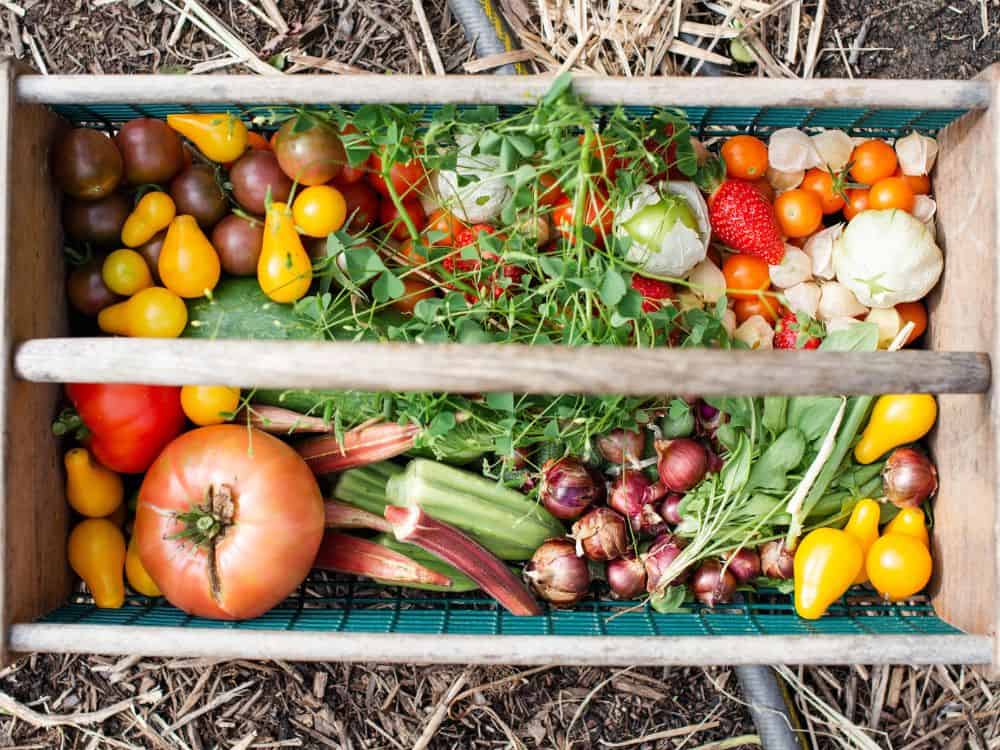
Building a self-sustaining farm requires a lot of grit, hard work, failure, and commitment.
So why bother when most things can be purchased, pre-wrapped, ready, ordered online, and delivered to your door?
Because the numerous self-sustaining farm benefits are well worth the extra effort.
Sustainable Food Systems & Finding Community
As outlined in the UN’s sustainable food systems framework, a sustainable food system delivers food security in a way that is economical, social, and environmentally sound so as not to jeopardize future generations’ food security.
On a larger scale, this means a closer look at using practices to preserve farmland and working to cut down on food waste and carbon emissions while still providing highly nutritious food to all communities despite location, economic standing, or life circumstances.
On a smaller scale, your own backyard homestead can be the means by which you weave a small food web that sustainably supports your family.
When you grow your own food, self-sufficiency is one perk, but it’s not the only one. It also alleviates the growing and transport of store-bought goods, limiting the number of carbon emissions for freight and the use of pesticides and industrial fertilizers on the food you consume.
Instead of food traveling 1500 miles to your dinner plate, it only needs to travel maybe 15 meters.
Beyond your front door, farm gate sales, local markets, community gardens, gifting to friends, and donating to local charities extend your sustainable outreach and better local communities.
For many, homesteading begins as a hobby with busy family schedules and full-time jobs to pad the bank account. As with any hobby, you’ll find a community with passion and knowledge. Lean on neighbors, mentors, and friends for tried and true tips and advice.
Besides, supporting other local families also serves to remove corporate overreach on large farms and instead supports those using ethical, self-sustaining farm practices.
Better For Biodiversity & The Environment
With over 40% of insect species declining, it’s no wonder ecosystems are suffering globally. Insects are the base of many food webs, which is overlooked when golf green lawns plague neighborhoods utterly devoid of diversity and life.
The rapid rate of current biodiversity loss puts this environmental catastrophe on the same scale as nitrogen scales and climate change—at least in terms of exceeding planetary boundaries, or operable levels “within which humanity can continue to develop and thrive for generations to come”.
The conversation surrounding beneficial bugs was abuzz thanks to bee-friendly initiatives like Greenpeace’s Save The Bees and Cheerios’ Bring Back The Bees campaigns. These and other green initiatives call on all large-scale producers to halt the use of pesticides on large mono-crops (that are readily affected by bad bug populations without the natural ecosystem balance at play) and focus on bug-friendly regenerative farming methods.
Sustainable gardening efforts can blossom into a beneficial bug and bloom paradise on your own self-sufficient farm.
Without large swaths of monoculture and soil degradation, organic measures grow enough food for you and support the native ecosystem. Farmers are encouraged to return unused sections to natural habitat and monitor the change when returning spared cropland to nature.
Rewilding parts of your homestead with native wildflowers encourages beneficial insects to visit your garden on their way to native plants.
Seeing is bee-lieving.
If you’ve ever stood under the canopy of a blossoming apple tree listening to the hum of honey bees at work, you’ll agree that we need to see something to keep it front of mind.
One inhabitable planet doesn’t leave much room for error, so protecting our natural environment and learning how to increase biodiversity (as well as ceasing to harm it) should be a top priority.
Conscientiousness & Conservation
If there’s one thing worse than burnt grass, it’s watered pavement.
Have you ever watched a sprinkler flailing in the middle of the day and depositing most of its water onto the road beside the grass it’s supposed to be watering?
This water is often from a city system (even some with water restrictions). Still, if you can’t see the reserve draining, it’s less likely you’ll purchase an energy-efficient sprinkler head, or soaker hose, or simply move the sprinkler and water at the appropriate time of day.
When learning how to build a self-sufficient homestead, resource conservation is one of the first considerations you make—without it, your foray into self-sustainable living will be limited.
A tank full of rainwater, portable solar panel-powered lights, seed packets, animal feed, meat, vegetables, and other farm commodities rises in value when you’re responsible for conserving them.
The self-sufficient farmer tries to minimize usage of not just store-bought commodities like food, but electricity, waste disposal services, and water. Instead, they try to make use of naturally occurring cycles: gravity-fed watering, composting toilets, and solar panels abound!
Nothing Wasted
There’s a popular, old-timey saying that’s a mantra among homesteaders: “Use it up, wear it out, make it do or do without.”
While this is the same premise behind today’s minimalism, recycling, upcycling, and low waste living trends, for homesteaders, it’s a necessity.
Mindlessly throwing away egg cartons becomes a much bigger deal when suddenly faced with not having the means to plant your garden seedling next spring.
The goal of using what you have on hand is trifold: save money, reduce waste, and lessen the environmental impact of each item on the homestead.
Overall Health & Wellness
Access to healthy, homegrown fruit and vegetables benefits your physical health, but does an apple a day really keep the doctor away?
We don’t need a Ph. (Vitamin) D. to know that being out in the summer sun boosts your ability to absorb and retain calcium and phosphorus, and helps limit cancer growth, fight viral infection, and reduce inflammation.
The physical act of gardening also increases aerobic activity, dexterity, and strength.
Countless studies have shown that gardening (or even viewing pictures of natural landscapes) improves mental health, mood, and physical health.
In Japan, there’s a physiological and psychological exercise called “shinrin-yoku” which translates to “forest bathing” based on the idea that being out in nature, surrounded by the color green relaxes the mind and body.
Many garden fanatics deem the garden their “happy place,” and there is scientific research to support that their green thumb is beneficial to their health.
3. How To Make A Self-Sufficient Homestead

Now, how do you become self-sufficient homesteaders?
Purchasing land, a house, building materials, garden supplies, and livestock can be expensive and time-consuming. Don’t let this dig up your homesteading dreams because there are always options to
Community gardens, eco-friendly planters for a container garden, and family plots are great for starting without your own acreage.
If your homestead is large enough that you need extra hands on deck at certain times of the year but can’t afford to hire staff, organizations like WWOOF connect workers (WWOOFers) with worldwide organic farms practicing sustainable methods and sharing their culture and knowledge.
In exchange for help, WWOOFers are provided meals and lodging.
Alternatively, you could become a WWOOFer yourself to learn tricks of the trade and gain first-hand experience before becoming your own self-reliant farming venture.
Others may choose to buy shares in cooperative farming communities where several families live and work on the same plot of land, each farming a specific item and combining their bounty.
Regardless of which option you choose, you’ll want to add these skills to your self-sufficient homestead checklist:
Composting
Building your homestead from the ground up begins with the soil.
Composting uses kitchen scrap, excess garden, and yard waste, all while building healthy, nutrient-rich soil for free—among many other composting benefits.
Rainwater Capture
If you’re not living on a completely self-sufficient off-grid homestead, rainwater capture is often overlooked with the “guarantee” of well or city water.
However, basic rainwater catchment systems can save gallons of water while sending untreated water into your house full of plants.
Water restrictions, droughts, and maintenance issues could limit your access, so, as they say, make hay while the sun shines (or catch rain while it falls).
Gardening
Wondering, “What do I need for a self-sustaining farm?”.
Something is simple as a garden and the ability to grow at least some of your own food is often all it takes. Think long-term, branch out, and plant fruit and nut trees for future harvests.
Preserving Food
Growing food is half the battle, preserving it is what will carry you through all winter long. Preserving food at home ensures you have enough food to sustain your family year-round.
A proper storage place like a cool basement or root cellar will carry you to Spring.
4. Plots & Pastures: Things To Consider In Your Self-Sufficient Farming Plan
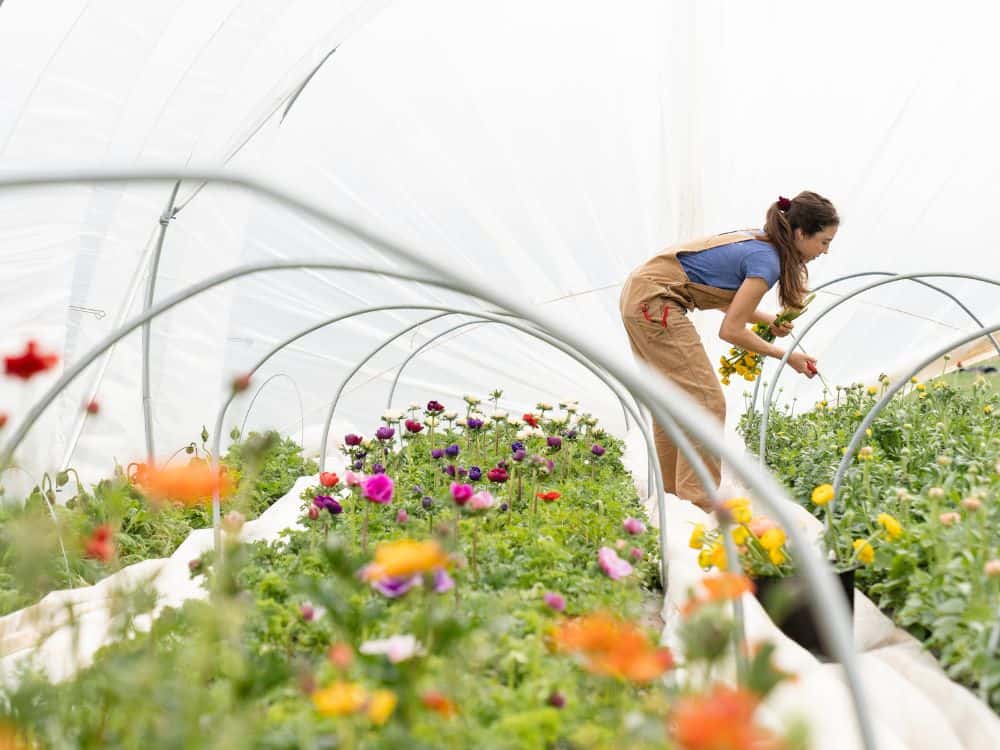
A garden plot or a small property can produce enough food for a small family. While only partial self-sufficiency, the smaller space encourages innovative ecological gardening practices to maximize yield.
A larger farm with access to established pastures can support efforts to raise livestock, garden, and other homestead endeavors.
Size matters, but not as much as you’d think. The consensus is that 5-10 acres are needed to be completely self-sustainable, but many variables must be considered when determining land size.
Land Usability, Growing Seasons, & Zoning
It’s easy to underestimate the effort that goes into growing each food item when all that has to be done is plucking them off the grocery store shelf.
Twenty acres of sloping rock face will be less productive than one acre of fertile land. Assessing your land, soil, sunlight hours, and drainage helps to determine how productive your acreage will be.
Similarly, zone 9 cherries probably aren’t going to be a sustainable option if planted on the oceanfront of Alaska. Matching your desired fruit or vegetable to the growing zone it does best in is im-pear-ative to success.
Outside seasonal zoning, check local ordinances and bylaws that may prohibit specific animal or garden activities.
Cold-climate gardening doesn’t have to put a freeze on your self-sufficient homesteading plan. Digging into which blueberry bushes thrive in which growing season saves time, money, and effort in the garden.
Using greenhouses, netting, and shade can extend your growing season.
With season-extending measures in place, your petunias will be perfect in no time.
The next step in leaf-ing the supermarket behind is starting a sustainable homestead with the right plants.
Start With Easy Growing Plants You’ll Use
Just because you can grow radishes doesn’t mean you should. If everyone in your family doesn’t eat the bulbous vegetable, it’s probably best to avoid a bed full of them.
Choosing vegetables you’ll use and preserving them is key.
Beginners should also opt for high-yielding fruit trees or vegetables that produce well without much intervention. Planting notoriously tricky veggies may leave you feeling as wilted as the plants.
Purchase or Trade Organic Heirloom Seeds
Choosing ideally heirloom seeds for your garden increases the overall health of your garden and guarantees future yields, as most organic seeds can be saved.
Grow Medicinal Herbs & Plants
If using medicinal plants began 60,000 years ago, the theory that plants can be used to cure common ailments or alleviate symptoms likely has some ground to stand on.
If you have enough land to produce food, you have enough for medicinal herbs used to treat inflammation, boost immunity, improve gut health, and more.
Plants like feverfew, coneflower, lavender, and chamomile can be used in teas, salves, and poultices.
These blooming, often aromatic plants are also a great nectar source for honey bees.
Culinary herbs like cilantro, sage, dill and oregano can be used in many dishes and also have tremendous health benefits (did you know cilantro can help detoxify heavy metals from your body?!).
5. Raising Self-Sustaining Farm Animals
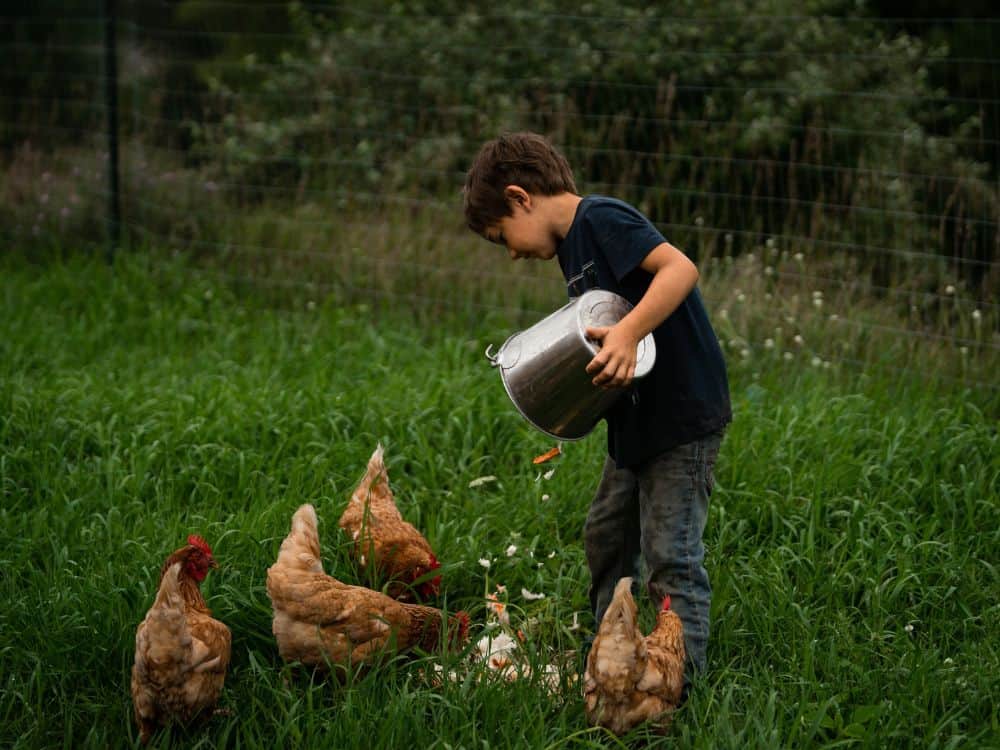
Unless you’re aiming for a self-sufficient vegan homestead (and if so, good for you!), raising livestock can benefit more than one area of your farmstead.
Multipurpose animals like milk goats provide fresh milk, delicious meat, and a little entertainment with their personalities.
What animals are needed for a self-sustaining farm?
Need is a strong world, but those that will best suit you depending on several factors.
Milking, Meat, or Management
Deciding which livestock animals to keep is just as important as choosing which vegetables to grow.
A dairy cow or milking sheep is probably a baaaa-d idea if you’re allergic to milk. A best practice is to choose animals to suit your needs or what the land requires.
Likewise, a non-dairy cow probably isn’t a good idea if you intend on butchering it for meat.
Choose Animals That Are Easy To Care For
What came first: the chicken or the egg?
For homesteaders, neither. What came before was building and preparing a chicken coop, ensuring it’s secure from pests and predators, ensuring they have all the proper feed for various stages of a chicken’s life.
Ok, now comes the chicken, and 8 months later, eggs.
If you’re new to animal care, there is a lot to learn to provide the best care possible and while learning as you go (and acknowledging that some lessons will be learned the hard way) is an integral part, you should do your best to minimize potential challenges.
While you rely on them, they also rely on you, so keep in mind that once you get animals, you must be committed to them.
That’s why it’s best to begin your homesteading journey with easy-to-keep animals. Then consider the following:
- Housing: Consider using repurposed materials for livestock sheds, fencing, and enrichment activities.
- Care: As self-sustainability is a journey, so is learning. To keep your farm self-sustaining, the animals in your care must be provided with up-to-date best care practices. Study up on common problems and home remedies for them, but be aware you will likely need to consult professional veterinary support from time to time.
- Containment: Fencing can be costly; proper layouts to use dual fence lines and gates.
- Animal Feed: Consider what they eat, how much they eat, what it will cost, and how you’ll procure it. An intermediate step in sustainable homesteads is growing your own feed. If you’re not ready to take on that responsibility, ensuring each animal on the homestead produces or contributes to feed costs keeps money in the bank account.
- Butchering: Are you raising animals for meat or not? If so, be prepared to provide it with the best life and care possible, and to humanely dispatch and process it. Learning to butcher your own meat is a homesteading skill that’ll save money and fill the freezer. If you’re not at the skill level, source out the nearest butcher to you.
- Breeding: It’s best to start with animals from elsewhere, but as you get more comfortable with animal husbandry, dip your toes into the world of breeding them to get closer to the most ideal self-sufficient farming definition.
Stocking Density, Regenerative Methods, & Intensive Land Management
Stocking density determines how many animals a piece of land can support. For example, five acres may support one dairy cow or five sheep. That number will vary depending on the land’s slope, whether wet, dry, or fertile.
A smooth moo-ve is to revisit land usability when deciding which livestock to pasture to ensure you’re not populating your land with more livestock than it can maintain.
Many regenerative farmers like Joel Salatin of Polyface Farm are spreading the word and planting the seed that regenerative agriculture—of which animals are a critical component—can increase crop yields, better biodiversity, improve soil health, and reduce carbon emissions.
Intensive land management is not to be confused with intensive livestock management, the ladder being strictly yield-based and not overly animal welfare focused. Intensive land management is sister to regenerative farming. Natural processes can take effect by constantly rotating livestock on sectioned land.
For example, when adequately grazed (to optimal regrowth height), sheep are moved off a section of land that now has naturally deposited fertilizer to nourish the soil, with chickens harvesting any bugs in quick succession.
6. More Self-Sufficiency Skills To Think Outside The (Garden) Box
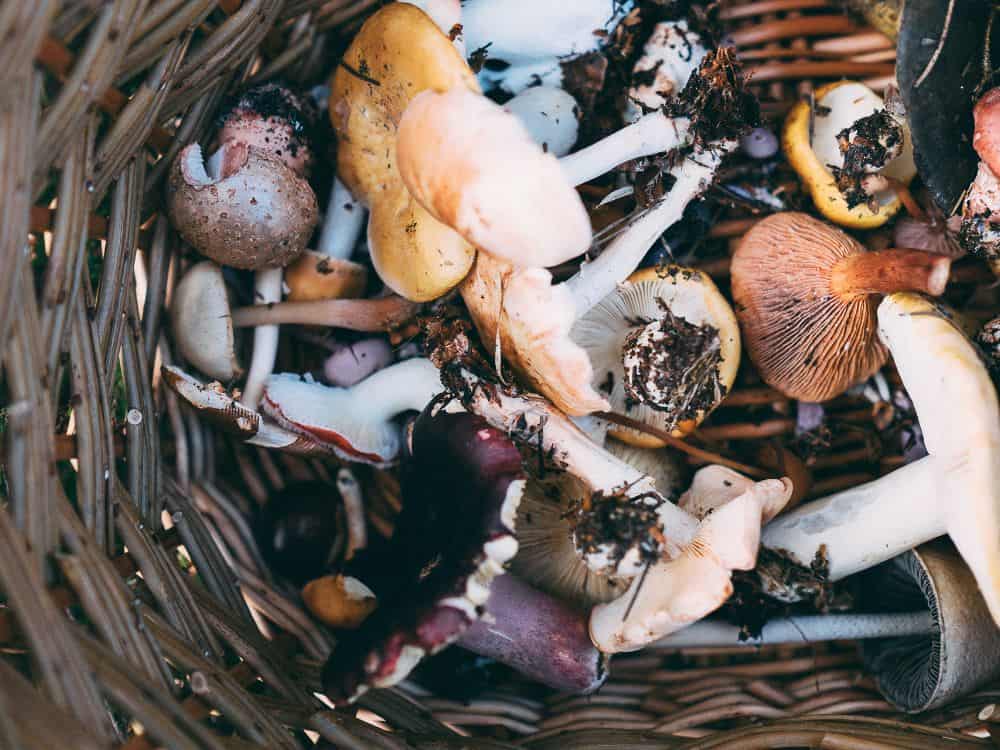
Remember: slow & (home)steady wins the race.
A self-reliant life isn’t born overnight. Building skills, completing projects, keeping livestock, and growing food require a little know-how and a lot of time.
But once you’ve ticked the basics off your self-sufficient homestead checklist, you can bring your skills home(stead) by adding the following skills and physical additions to your self-sufficient farming repertoire:
- Solar power: Solar panels can power things like lighting, heating, cooling, and solar-powered pumps, all using sustainable energy.
- Tanning hides: Keeping livestock should produce less waste for your sustainable homestead, which means using as much of the animal as possible, after harvest. Tanning hides, and leather work can create your own clothing, rugs, blankets, coats, and more.
- Sewing & Knitting: Online clothes repair services are great for sustainable living, but less so for self-sustainable living. Learning to mend clothing yourself extends the life of each item you purchase or create.
- Hand wash & dry laundry: Returning to the necessity of conserving our resources, hand washing (using natural laundry detergent) and air drying clothes conserve energy and water.
- Soaps & Candles: If you’re all baked out, milk, flowers, and herbs can be made into mild-smelling soaps. Homemade candles can extend light into the night.
- Pottery: Whether it’s dining dishes or patio pots, the art of pottery can produce houseware items that would usually be purchased at the store—especially if you have lots of natural clay in your soil.
- Foraging and Hunting: Sustainably harvesting natural, wild flora and fauna can alleviate some of the producing pressure, keep nature in balance and guarantee foraging and hunting options for years. The connection formed to the land meant to sustain you grows from using and respecting it.
- General Craftsmanship, Woodworking, and Fix-it Skills: It’s rare to find a farm without a loose screw (or a few), a wobbly fence post, or a sagging fence. General fix-it abilities will not only save money, but make future projects come together easier.
- Farm Tours: Do you need your farm to produce more? You might consider a farm tour. Warm weather tours, corn mazes, flower patches (don’t forget to save the sunflower seeds!), a vegetable garden, and livestock all draw in visitors to your farm and can generate income.
A self-sufficient homestead plan successfully combines learned skills and well-functioning systems and applies them to each new project.
Proper time management and project allotment guarantee your homesteading goals stay on track and remain profitable.
Did you know we Have a Newsletter?
We cover the latest in sustainable living, fashion, zero waste, beauty, travel, finance and more…
Final Thoughts on Building A Self-Sustainable Farm
Whether your homestead journey began because you wanted to be more self-reliant, employ food waste solutions, or just focus on a simpler way of life, you’ll feel at home creating a sustainable homestead.
To thrive in this adventure, sustainability has to be at the core of all you do. Everything on your farm and in your house must serve a purpose and benefit a sustainable cycle on the homestead.
Especially if the only purpose is to bring you joy.
The earth craves sustainable farmers who put ecosystems, soil, atmosphere, and animal welfare first. Self-sustaining homesteads everywhere are a nod to nature’s well-established systems, beauty, and resilience. By mimicking these natural processes, the bounty comes in your own meat, vegetables, fruits, and peace of mind.
Share this with your homesteading friends, whether they’ve only just planted the seed or harvested the fruit of sustainability.
Pin these:
